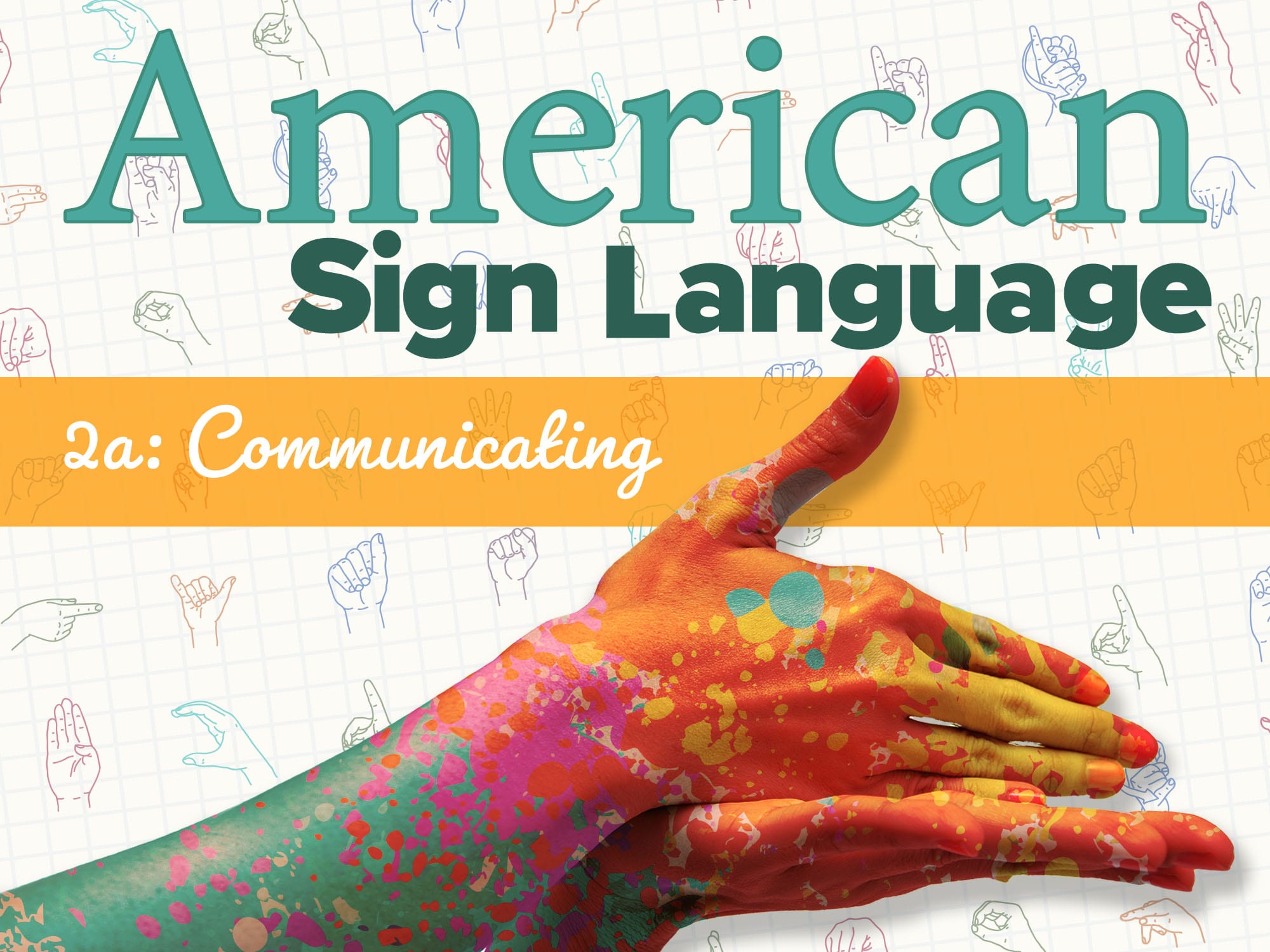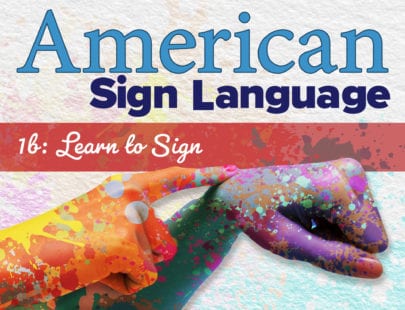
American Sign Language 2a: Communicating
It’s time to move beyond introductory ASL signs and start forming more compelling signs for communication. Explore how expressions can enhance signs and lend dimension to conversations, while learning vocabulary for descriptions, directions, shopping, making purchases, and dealing with emergencies.
Units at a Glance
Unit 1: Describe It!
“See Spot run.” “See Spot run fast into the house to get his bone.” When building sentences in a language, you need many tools to make a beautiful structure. Just like Spot’s house is built with not just a hammer and nails, but also using things such as wood, paint, glass, and concrete, you’ll need a few extra tools and materials to build compelling sentences in American Sign Language. Here, we will start to gather those extra materials to make detailed sentences in sign language—you’ll be surprised at the cool ways you can add descriptions to other signs in ASL!
What will you learn in this unit?
- Use classifiers for people and objects in conversation
- Identify people by describing them accurately
- Point appropriately while chatting in ASL
- Sign familiar places in your neighborhood
Unit 2: Getting Around Town!
Learning signs in ASL lays the foundation for your visual communication, but now you need to bring your signing into the next dimension with extra tools—you can think of it as 3D ASL! We will add dimension to our signing with mouthing morphemes, locatives, and comparing and contrasting. In addition, we will practice using classifiers. These tools will allow you to expand your repertoire to give directions—around the house, around the school, or even around the whole town. Plus, learn a bit about how babies learn sign language and how this might give you clues to how you are learning ASL!
What will you learn in this unit?
- Explain how learning ASL as a baby benefits Deaf children later on
- Use basic locatives to describe spatial relationships
- Give directions in ASL
- Use mouth morphemes to indicate sizes
- Compare and contrast pairs of objects, concepts, or creatures
Unit 3: Emergency Situations
Life is full of unexpected events, some of them, unfortunately, are medical emergencies. Giving and understanding directions is obviously key to responding in an emergency, but it is also a necessary part of navigating everyday life. For example, if you visit a Deaf campus or event, you’ll also likely need these signs to find your way around. In addition to tackling some of these crucial signs, we will also learn about how ASL interacts with spoken language (imagine the potential challenges this creates in times of actual emergencies!) and how living languages evolve all the time.
What will you learn in this unit?
- Explain the properties of a living language
- Harmonize your sentences with agreement verbs
- Give and understand directions – even in an emergency
- Follow ASL gloss to help you learn more vocabulary and sign order
Unit 4: Fun Activities
Calling all introverts and extroverts! Do you like to hang around the house? Or are you happier running around town for fun? Here, we will get to learn the signs for our favorite activities and then practice some of the grammar and body language we have been learning about to give more meaning to our signing. From locatives to agreement verbs to eyebrow raises, there are so many factors that play a role in ASL. Plus, we’ll take a peek into the lives of hearing people who are born to Deaf parents, a famous Deaf musician, and the cultural differences that make communicating in ASL so different from English.
What will you learn in this unit?
- Explain some of the cultural confusion experienced by CODAs
- Describe your preferences in detail, from WOW to BORING
- Compare and contrast with ease
- Raise and lower your eyebrows at the right times in ASL
- Understand the characteristics of high context and low context cultures
Unit 5: Everyday Activities
Everyday living doesn’t have to be boring anymore. You can use your daily activities to practice your sign language! Walk the dog, buy some groceries, brush your teeth. All while “talking” to yourself in ASL. People might think you are a bit crazy, but that’s okay—tell them you are learning ASL, teach them a sign or two, and they will be intrigued. Along with tackling various activity related signs, we’ll also delve into the different types and styles of signing that you can find in the United States, and all the advances in technology that have allowed Deaf people to express themselves and communicate more easily over distances.
What will you learn in this unit?
- Distinguish between regional variations of ASL and unrelated sign languages used in the United States
- Describe your daily routine in ASL
- Shop for bargains and discuss them in ASL
- Use the sign FINISH as a time sign or as a conjunction
- Trace the history of communications and broadcast technology for use by the Deaf
Required Materials
Physical
- A camera (cell phone, table, or computer camera is fine)
- Photo of family or friends



